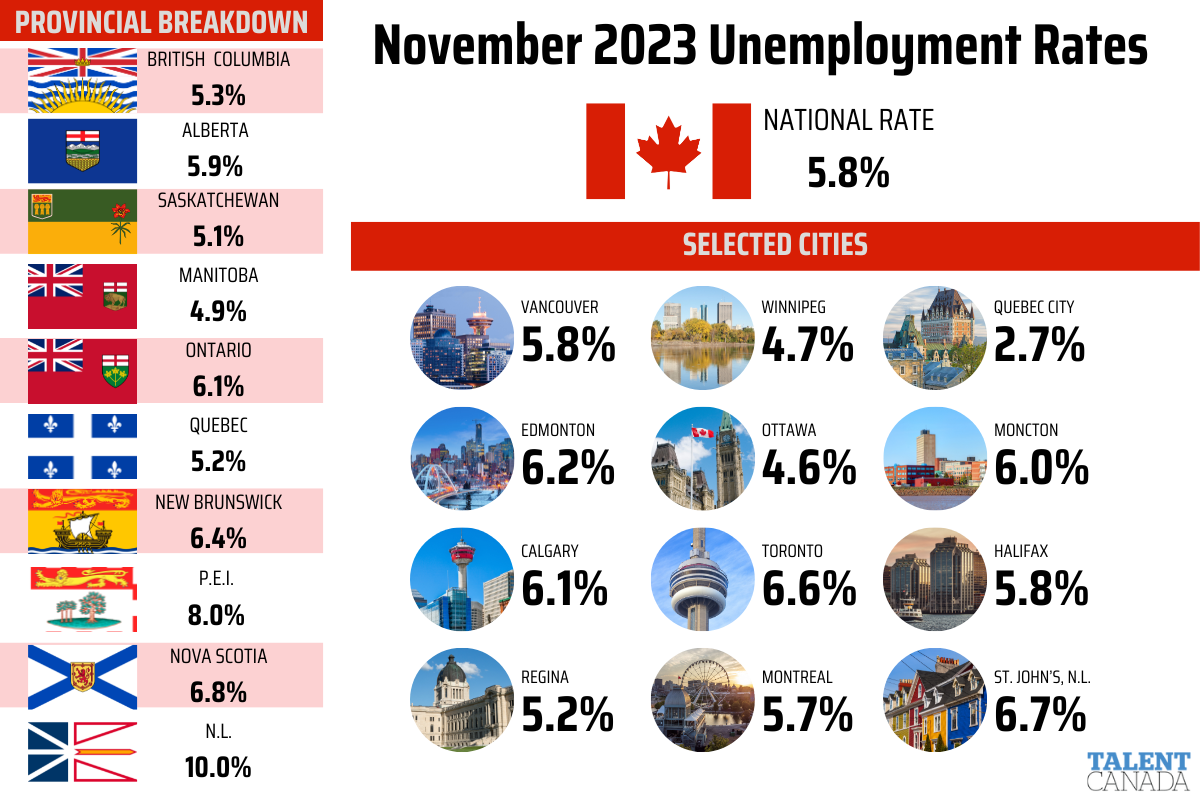

Features
Workforce Statistics
Unemployment rate rises to 5.8%, hybrid work arrangements rising: Statistics Canada
December 1, 2023
By
Talent Canada

Canada added 25,000 jobs in November as the unemployment rate inched up 0.1 percentage points to 5.8%.
This slight growth failed to keep pace with the expanding population, resulting in the employment rate also slipping slightly to 61.8%. The stagnation in employment reflects a trend that started in April.
Manufacturing, construction lead the way
Sector-wise, manufacturing and construction witnessed employment gains, with 28,000 new jobs in manufacturing (up by 1.6%) and 16,000 in construction (a 1.0% increase).
However, these gains were offset by significant losses in wholesale and retail trade, which saw a reduction of 27,000 jobs, and in the finance, insurance, real estate, rental, and leasing sectors, which lost 18,000 jobs.
Employment up in New Brunswick, down in P.E.I.
Regionally, employment rose modestly in New Brunswick, while Prince Edward Island experienced a decline. Other provinces reported little to no change. Large census metropolitan areas like St. Catharines–Niagara and Oshawa recorded the highest increases in unemployment rates since April.
Hours worked falling
Notably, total hours worked in November decreased by 0.7% yet showed a 1.3% year-over-year increase. In terms of wages, there was a 4.8% year-over-year rise in average hourly wages, aligning closely with the growth observed in October.
The report also highlights challenges faced by recent immigrants in securing jobs that match their qualifications and experience. Almost 60% of immigrants who arrived in the past five years struggled to find work relevant to their foreign credentials.
Number of hybrid workers triples over last two years
In a shift from the COVID-19 pandemic’s work-from-home trend, the report notes a gradual return to in-person work environments.
The share of workers who work exclusively from home has gradually declined since the winter of 2022, falling from 24.3% in January 2022 to 12.6% in November 2023.
In comparison, the share of workers that indicated that they usually worked exclusively at locations other than their home in November 2023 was just over three-quarters (75.7%), similar to August 2023 (76.1%), but up from January 2022 (72.1%).
However, hybrid work arrangements have gained popularity, especially among parents of young children, reflecting changes in work patterns influenced by the pandemic. The share of workers with hybrid arrangements has more than tripled since January 2022, rising from 3.6% to reach 11.7% in November 2023.
Print this page